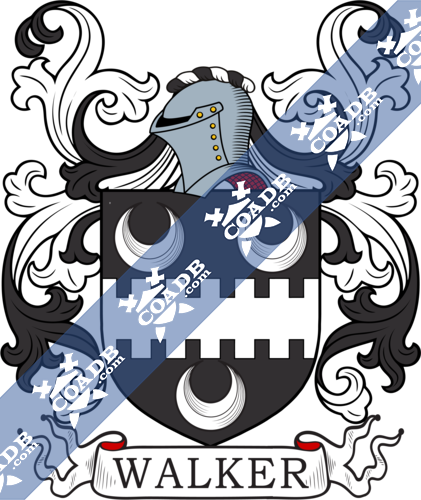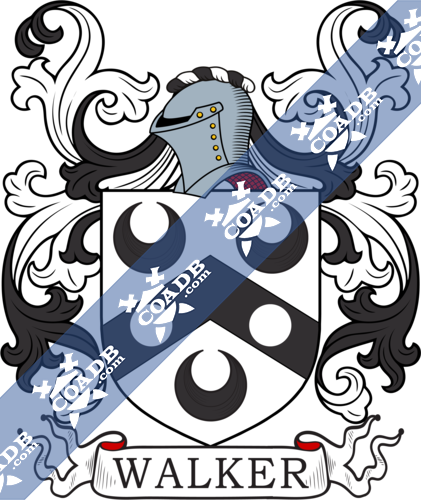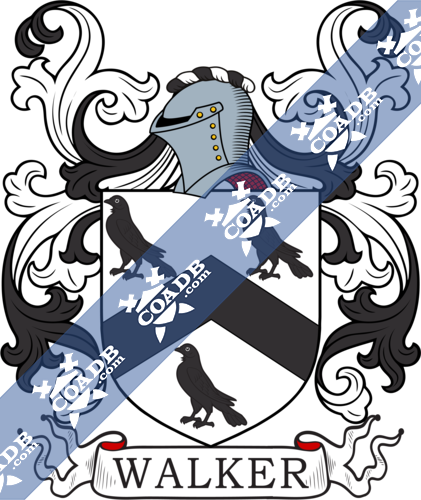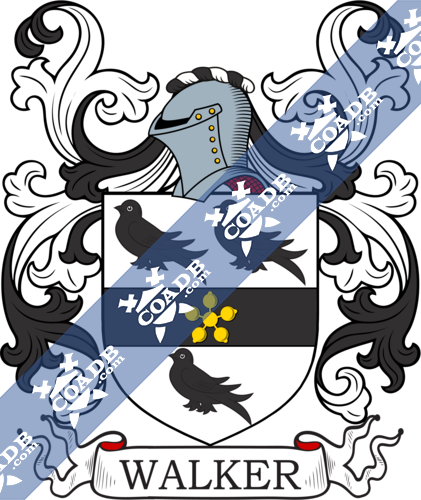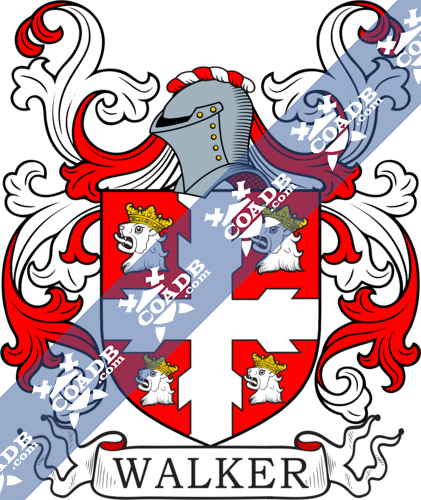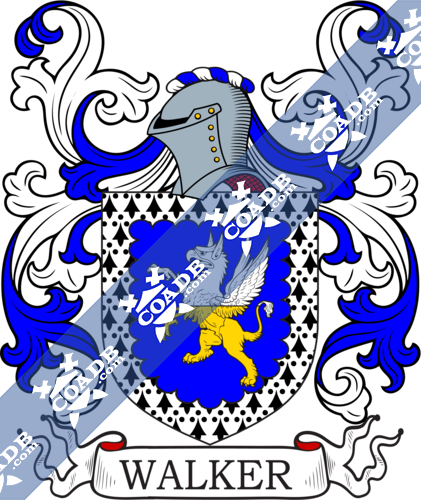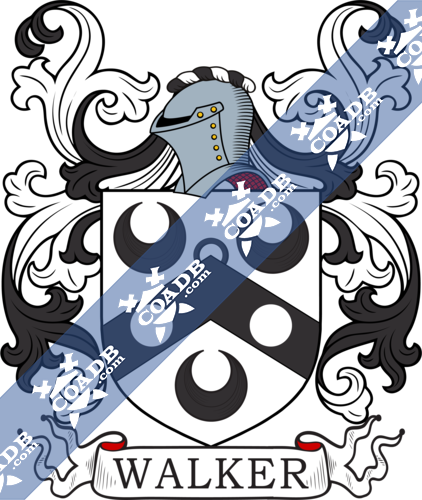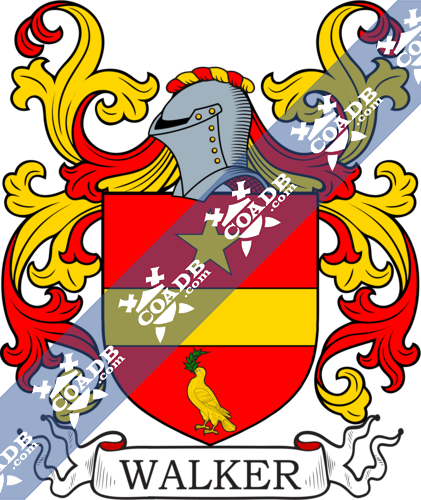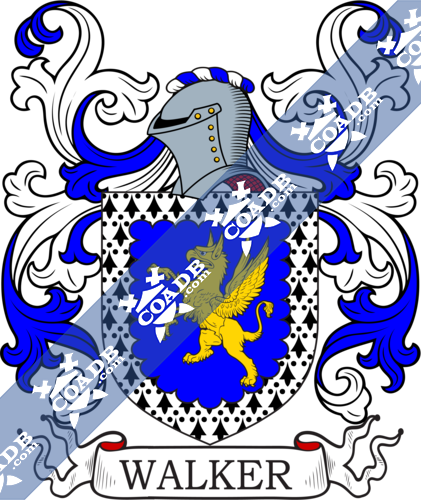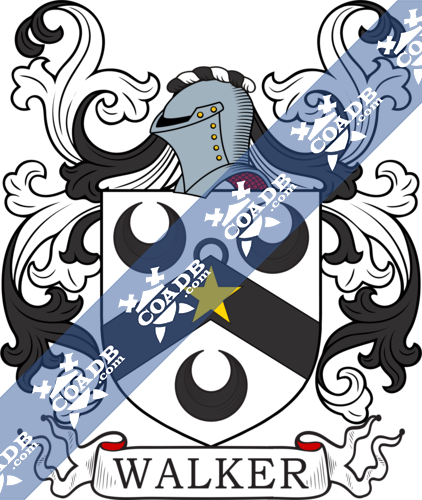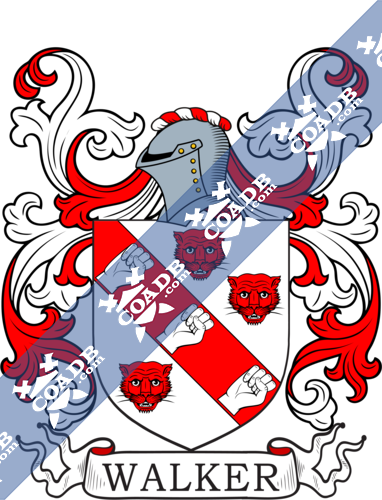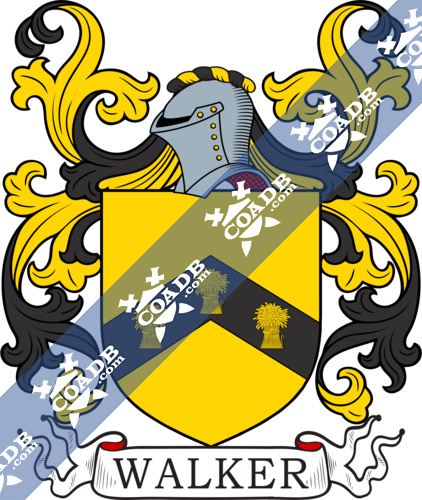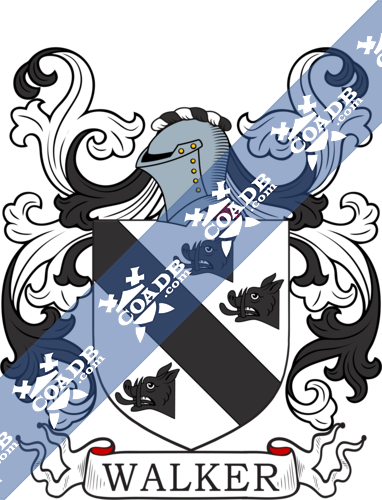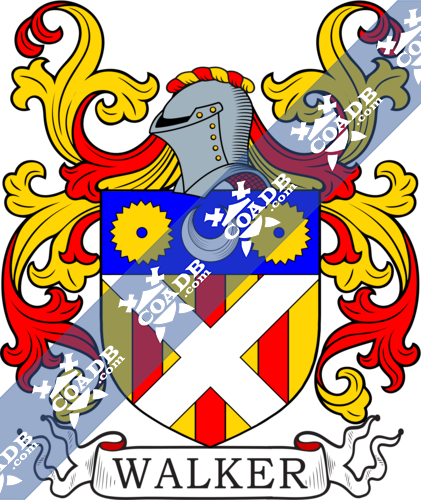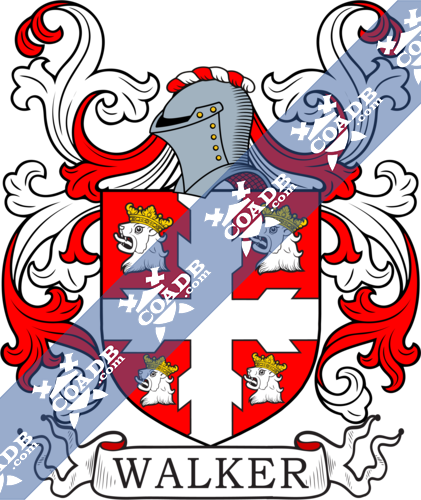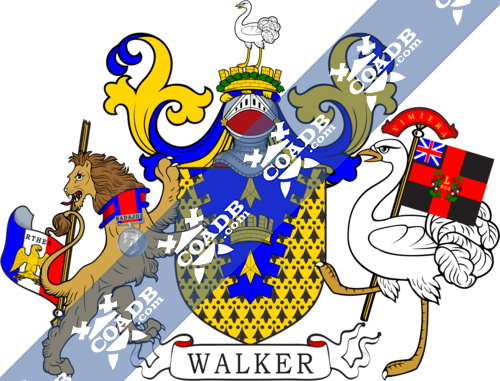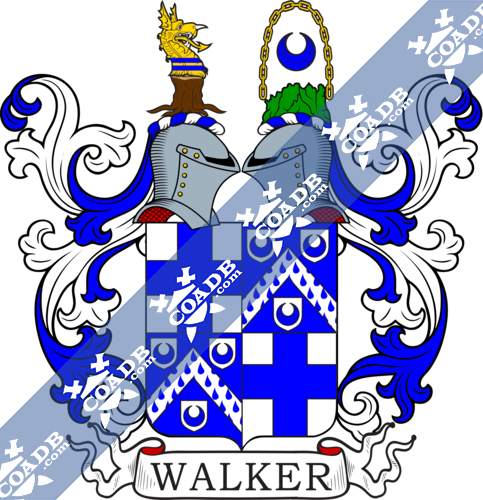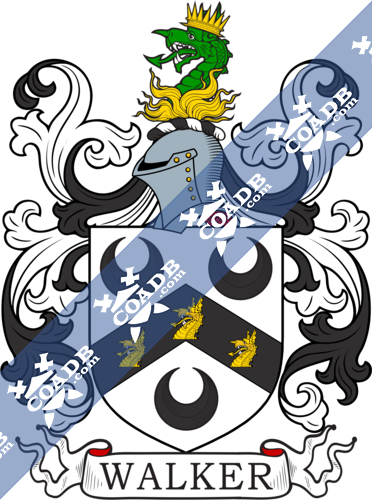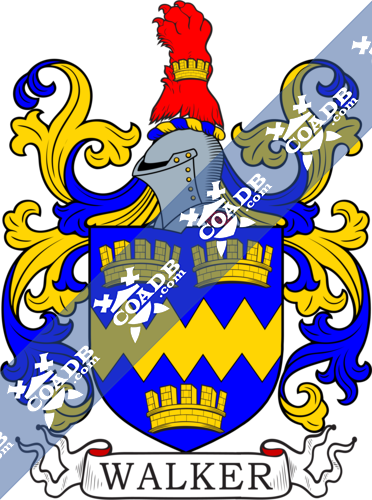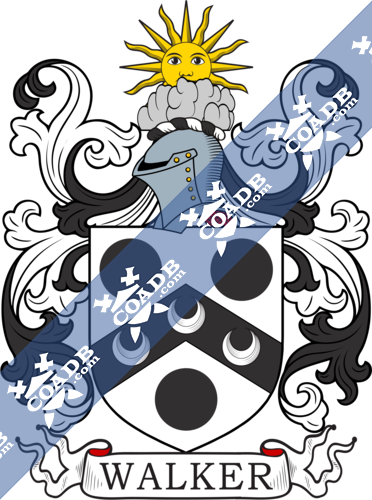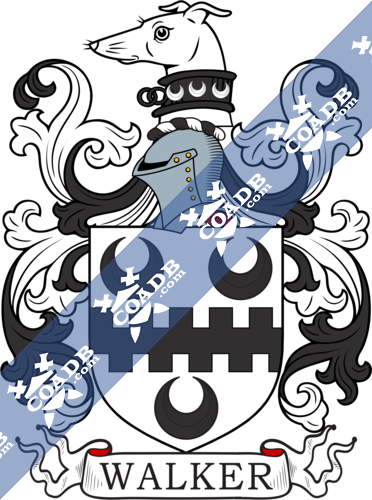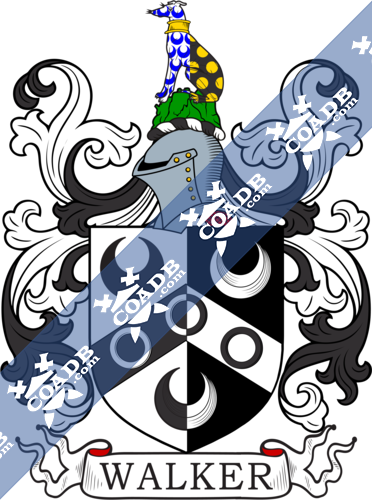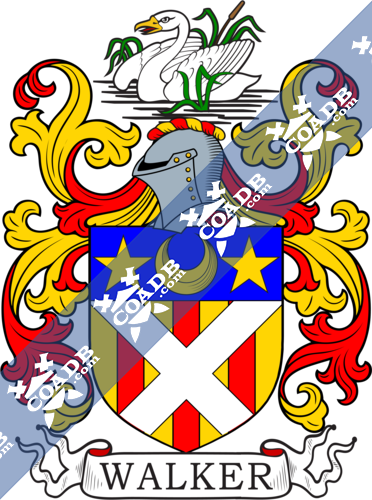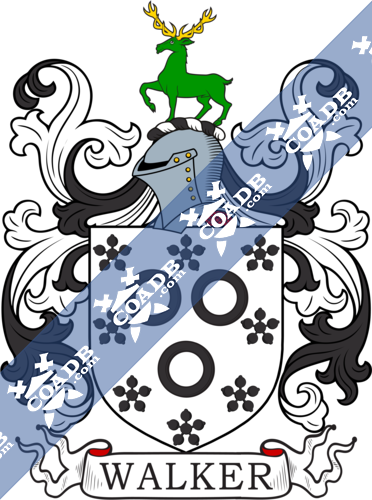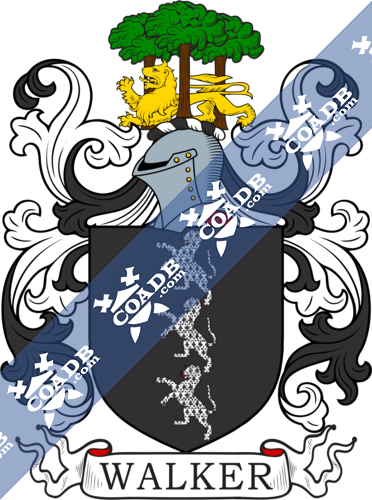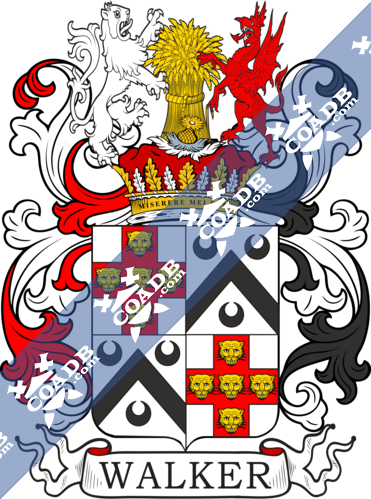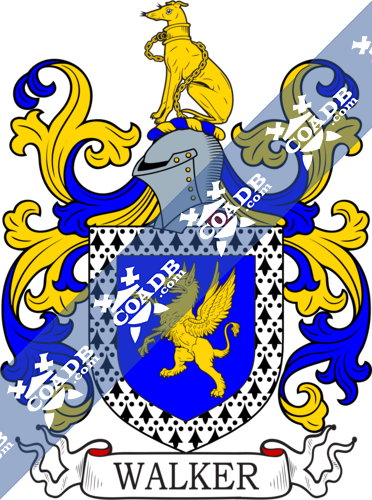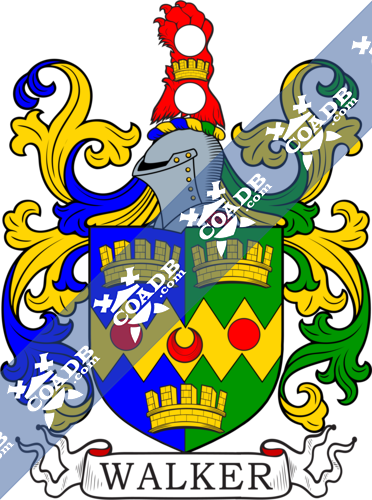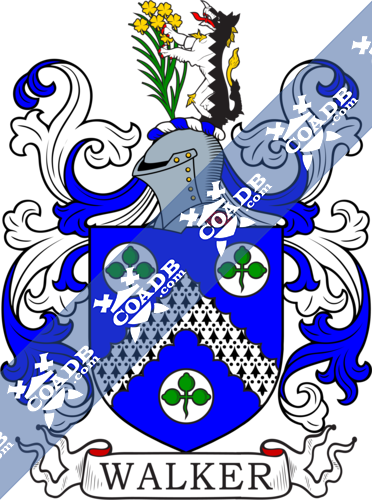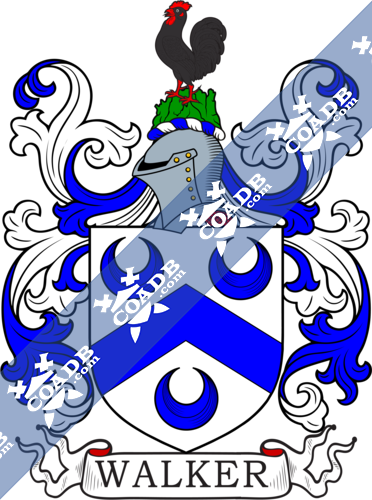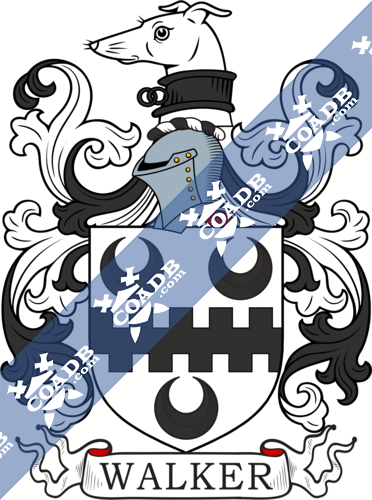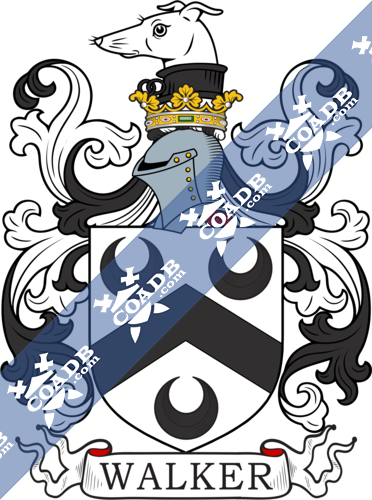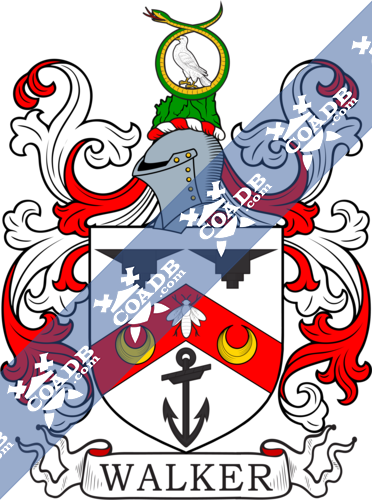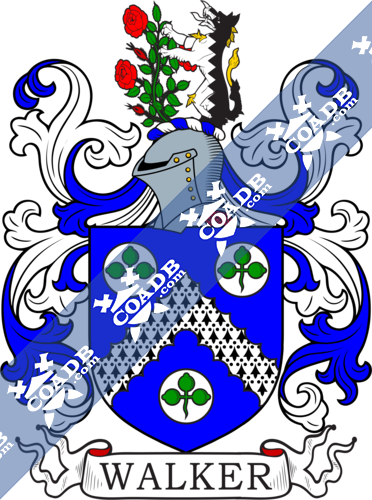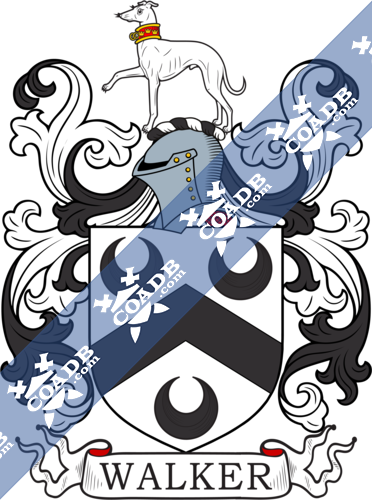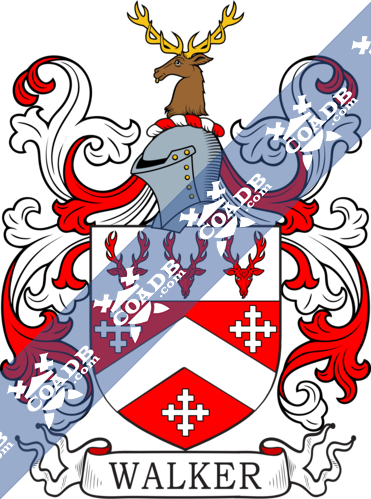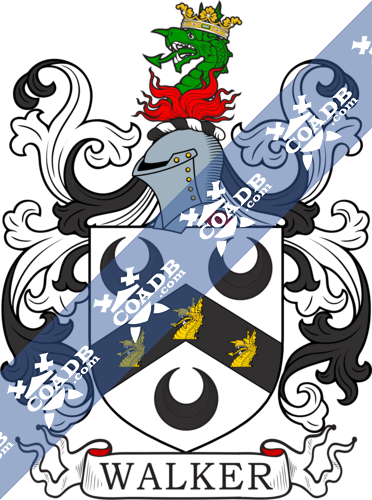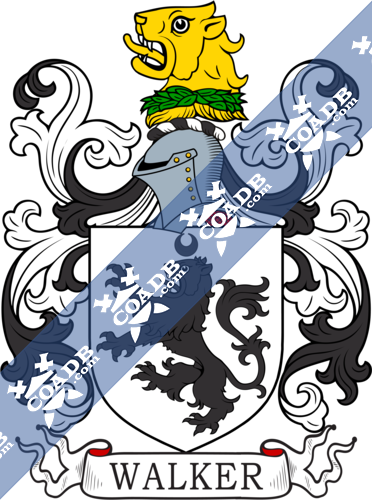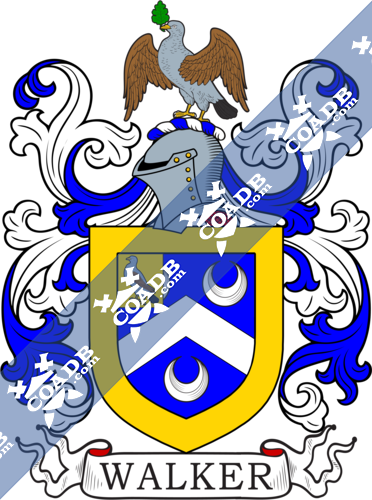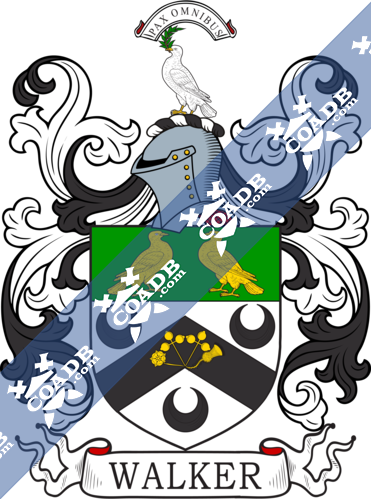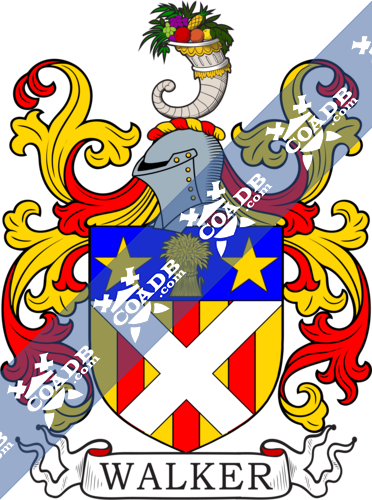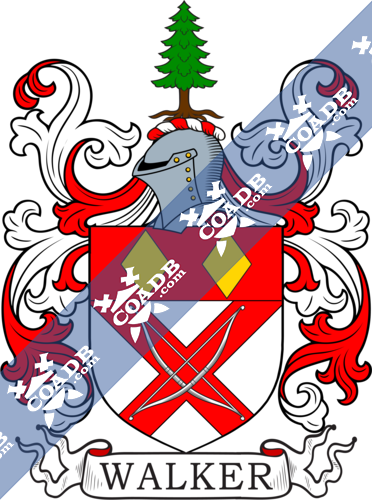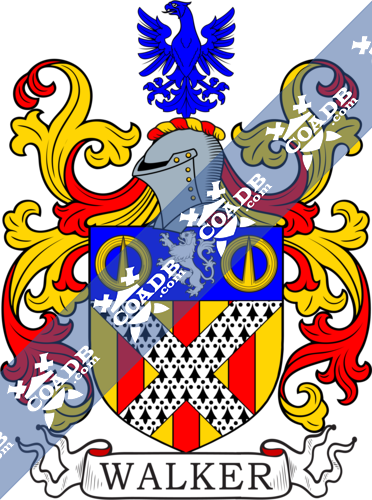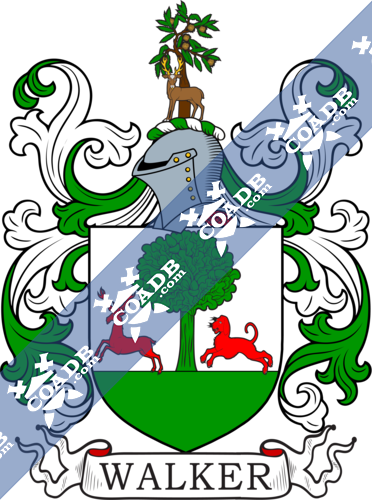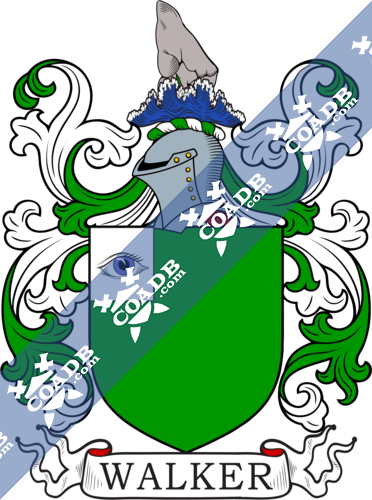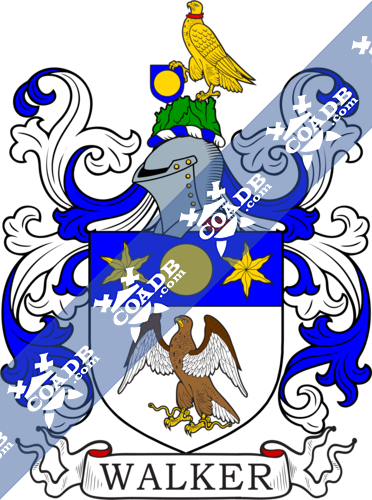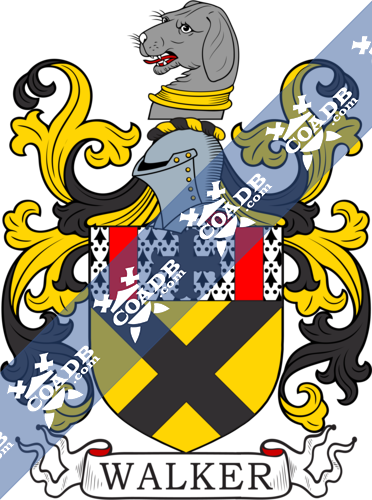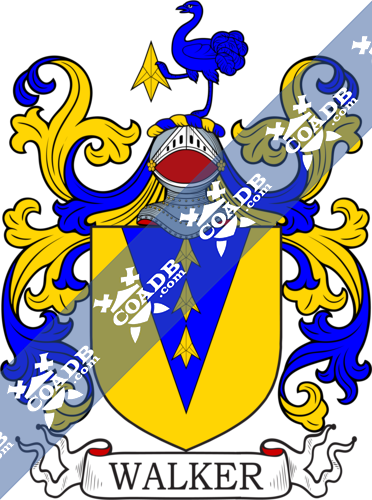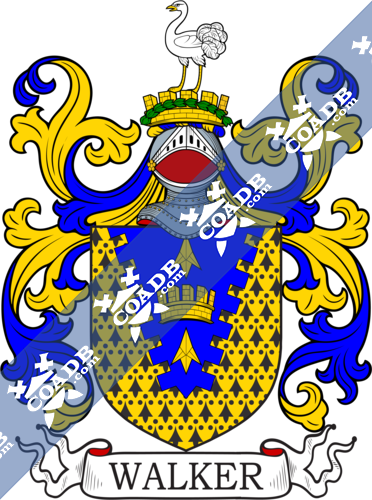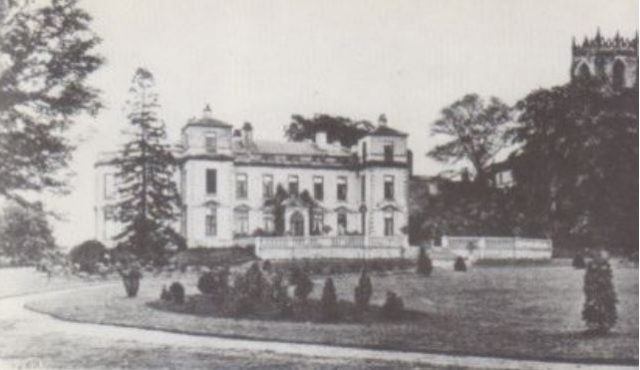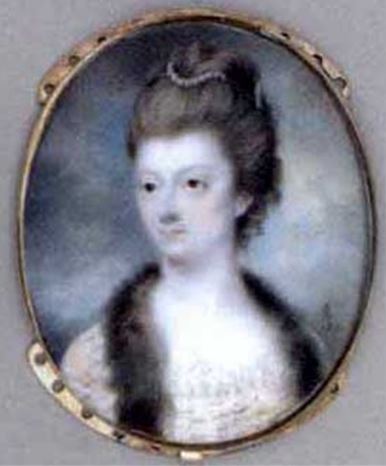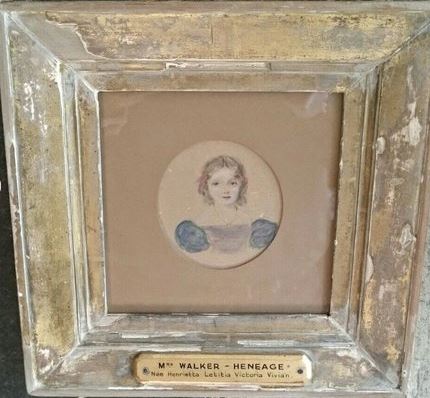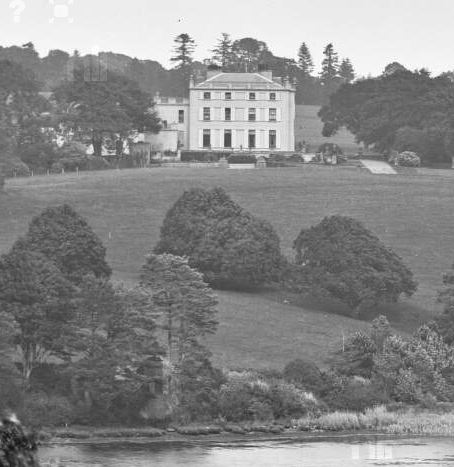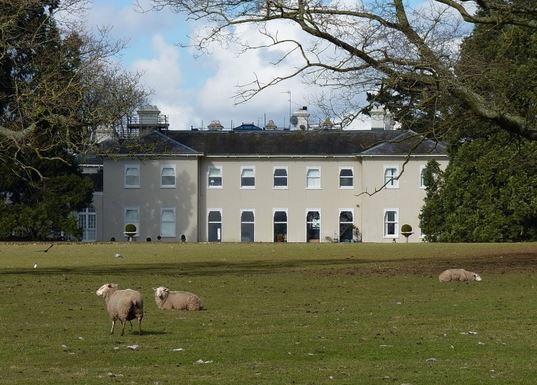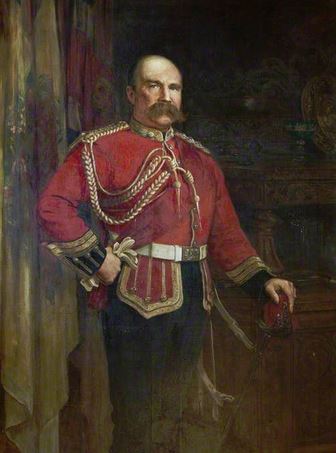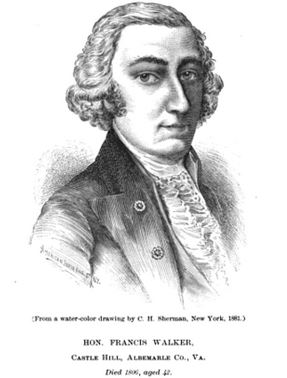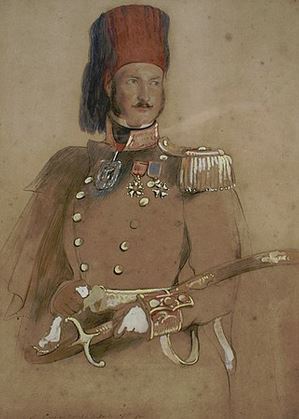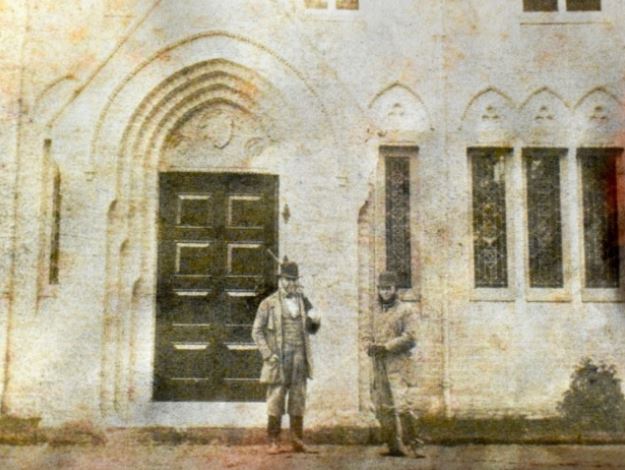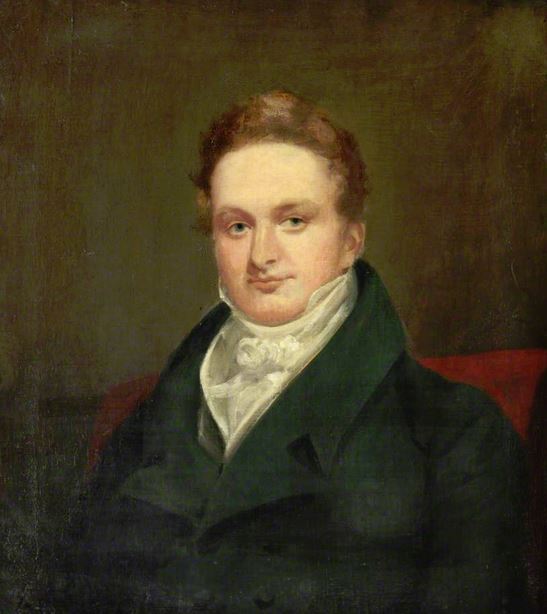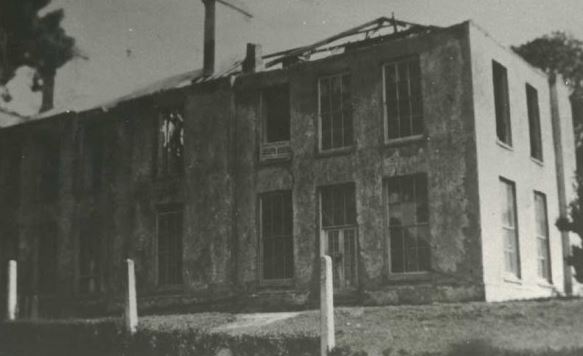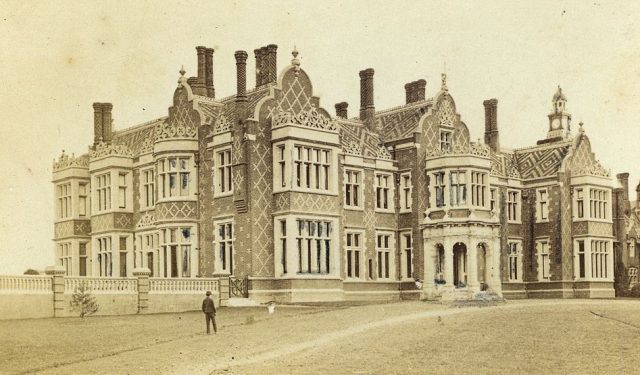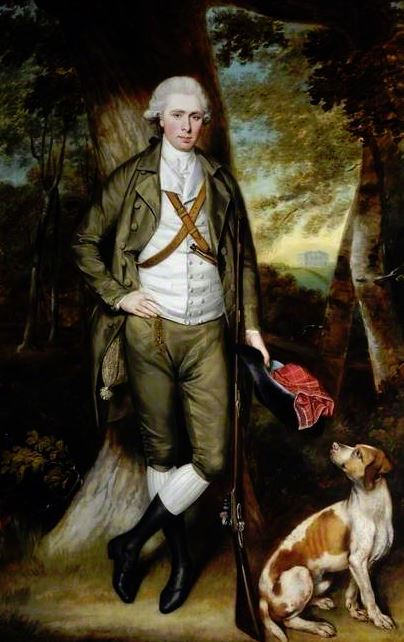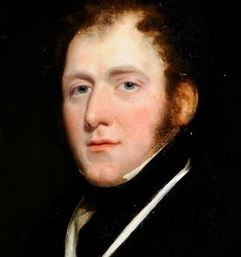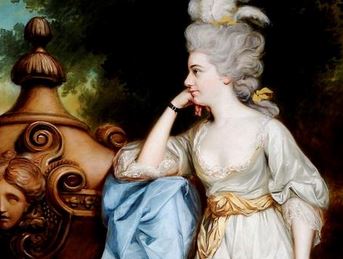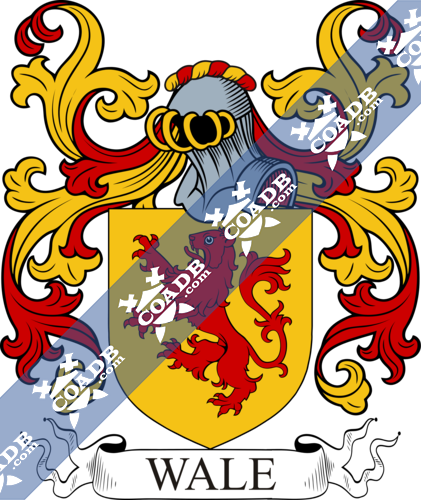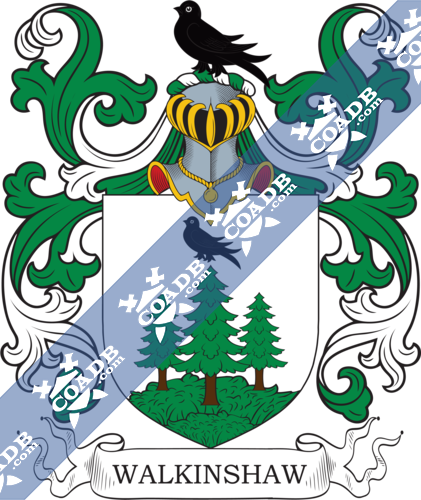Walker Family Crest, Coat of Arms and Name History

Walker Coat of Arms Gallery
Don’t know which Coat of Arms is yours?
We can do a genealogical research. Find out the exact history of your family!
Learn MoreSurname Name Meaning, Origin, and Etymology
This English/Scottish last name is an occupational surname meaning “the walker”, another name for a fuller (along with the surname Tucker): a person who cleans cloth (mainly wool) to get rid of oil, dirt, and other impurities to make it thicker, a common process during medieval times and the Middle Ages throughout Europe and particularly in Britain. The worker often stepped or walked on the cloth, hence the term walker. It derives from the Anglo-Saxon or Old English word wealcere, deriving from the word wealcan, meaning to tread or walk. Another source asserts the name is a locational one, deriving from a locale in Northumberland named Walker. This same source relates the name to the Old Scandinavian word kiarr, meaning “the wall by the marsh”.
Spelling Variations
Common spelling variants or names with similar etymologies include Walkare, Walkar, and Walkere. In Scotland, it has been used as an Anglicized version of the Gaelic surname MacanFhucadair, “son of the fuller”.
Popularity & Geographic Distribution
The last name ranks Walker ranks 28th in popularity in terms in the United Status as of the 2000 Census. The name ranks particularly high in the following six states: Georgia, Mississippi, Alabama, Tennessee, Oklahoma, Arkansas, and Wyoming. The surname is even more common in England, where it ranks 18th. It ranks highest in the following counties: Derbyshire, Nottinghamshire, Yorkshire, Rutland, and Westmoreland. The name is common throughout the English speaking world: Scotland (21st), Wales (46th), Ireland (471st), Canada (42nd), New Zealand (12th), Australia (14th), and South Africa (303rd).
The 1890 book “Homes of Family Names” by H.B. Guppy, states the following in regard to this surname: “This name is mainly characteristic of the midlands and of the north of England. It is comparatively infrequent in the counties between the Wash and the Thames. It is absent or rare in the southern part of England south of a line joining the mouths of the Thames and the Severn. Its great home in the midlands is in the counties of Derby and Notts. In the north it is most frequent in Durham and Yorkshire. It crosses the Scottish border, not by way of Northumberland, where it is infrequent, but through Cumberland into the county of Dumfries, and it is fairly represented over Scotland, except in the extreme north. In Chapter I, I have referred to the general distribution of names connected with the cloth trade. “Walker, which is derived from the Anglo-Saxon word wealcere, a fuller, is synonymous with Tucker. In a statute of Elizabeth, a person of this occupation is referred to as ” Clothe-Fuller, otherwise called Tucker or “Walker “. The early fashion was to tread out the cloth; and even now in the north of England fuller’s earth is called walker’s clay. It is remarkable that the absence or rarity of Walker in the south of England is supplied by Tucker and Fuller. Tucker takes its place in the south-west, and, in fact, in almost all the southern counties as far east as Hants and Wilts. Fuller takes its place in the south-eastern counties of Kent and Sussex”.
Early Bearers of the Surname
The earliest known bearer of this surname was Ricard le Walkere who was documented in the Select Documents of the Abbey Bec in Warwickshire in 1248 AD. A Robert le Walker was recorded in the Assize Court Rolls of Yorkshire in 1260 AD. The Hundred Rolls of 1273 AD, a census of Wales and England, known in Latin as Rotuli Hundredorum lists one bearers of this surname: Geoffrey le Walkare in London. The Poll Tax of Yorkshire in 1379 AD lists two bearers of this last name: Johanna Walkar and Willelmus Walkere. The Placita de Quo Warranto lists one Peter le Walkar in county Gloucestershire during the reign of King Edward I of England (1272-1307). The Excerpta e Rotulis Finium in Turri Londinesi lists one Ralph le Walkere.
History, Genealogy, and Ancestry
The famous genealogist Bernard Burke’s book “The Landed Gentry” discusses eight branches of this family: 1) Walker of Blythe Hall, 2) Walker of Berry Hill, 3) Walker of the Priory Bathwick, 4) Walker of Dalry, 5) Walker of Tykillen, 6) Walker of Berkswell Hall, 7) Walker of Crawfordton, and 8) Walker Heneage of Compton Basset.
The first branch discussed is Walker of Blythe Hall. It begins with a mention of Thomas Edward Case-Walker, Esquire of Blythe Hall, Notts, who was the successor to the property under the will of his uncle, Henry Frederick Walker, and assumed the surname then. Burke traces the genealogy or pedigree of this branch back to William Walker, a resident of the parish of Ecclesfield in county Yorkshire, who was born in 1650. He married Mary, daughter of Joseph Wood, and had a son with her named Joseph. Joseph married twice, and had two sons (Joseph and Benjamin) wthi his first wife, and with his second wife, Anne, the daughter of Jonathan Hargreave, he had three sons: Jonathan, Samuel, and Aaron. His second son was Samuel Walker who was born in 1716 and founded iron works. He was from Hill Top, Ecclesfield and moved to Masborough where he had commercial property. He had three daughters and four sons: Samuel, Joshua, Joseph, and Thomas (of Berry Hill). His second son Joshua, was an Esquire of Clifton, near Rotheram, who purchased the estate of Blythe from Colonel Mellish. He married Susannah, daughter of Samuel Need, and had issue with her. His son and heir was Henry of Blythe and Clifton. Henry was born in 1785 and was Justice of the Peace, Deputy Lieutenant, and High Sheriff. In 1806, he married Elizabeth, daughter of Edward Abney, and had four children with her: Henry Frederick, Arthur Abney (born 1820 and left eight children with two wives), Caroline Elizabeth (married John Ashton Case), and Emily (married Thomas Streatfield Lightfoot). He died in 1860 and was succeeded by his son, Henry Frederick Walker, Esq. of Blythe Hall and Notts. He was Justice of the Peace and Deputy Lieutenant for York. He was also once High Sheriff of Notts. He married a member of the Howard family in 1833 and had two issue with her: Frederick Albert (1836) and Elizabeth (1838). The Walker Family crest has the following blazon in heraldry: Argent, on a chevron gules, between two anvil in chief and an anchor in base sable a fee between two crescents or. Crest: On a mount within a wreathed serpent a dove statant all proper.
The second branch is Walker of Berry Hill. It begins with a mention of Edward William Walker, Esquire of Berry Hill, Notts. He was born in 1844, was Justice of the Peace for Notts, and married Elizabeth, daughter of Thomas Ewell of Surrey, in 1874. Burke traces the genealogy of this family back to Joseph Walker, Esq. of Eastwood by Rotheram in county York. He was the third son of Samuel Walker of Masborough (mentioned in the preceding paragraph). He married Elizabeth, daughter of Samuel Need, and had seven children with her: Joseph Need (1790), Thomas (1795), Edward Samuel, Harriet (married Reverend William Alderson), Sophia (married Thomas Trebeck), Catherine (married James Haffenden), and Elizabeth. He died in 1801 and was succeeded by his son: Sir Edward Samuel Walker. Edward Samuel was born in 1799 and was of Berry Hill, Notts. He was Justice of the Peace and Deputy Lieutenant. In 1842, he married Francis Valentine, daughter of George Stevens of Old Windsor, and had issue with her: Edward William, Frederick Adam, Marion Emily (married Robert N. Batt), Fanny Louisa (married Reverend Frederick Hall), Sophia Eugenie, and Harriet Annie. He later married Mary Elizabeth, daughter of Captain Hallowes of the Royal Navy, in 1866. He was the Mayor of Chester for ten years between 1838 and 1848, as well as High Sheriff of Notts in 1866. He died in 1877 and was succeeded by his eldest son. This family bore the same Walker coat of arms as the Blythe Hall branch.
The third branch mentioned is Walker-Heneage of Compton Basset. It begins with a mention of Clement Walker-Heneage, Esq. of Compton Basset, Wilts. He was a Major in the arm, 18th Hussars, and Justice of the Peace for Wilts. Burke traces the lineage of this family back to Robert Heneage of Lincoln, auditor for the King, and son of John Heneage.
The fourth branch is Walker of the Priory Bathwick. It begins with a mention of Frederick John Walker, Esquire of the Priory Bathwick in county Somerset who was born in 1824. In 1849, he married Lydia, daughter of Samuel Harwood of Barton Hall, and had eight children with her: John Charles Arthington (1859), Florence Elizabeth Hannah (1851), Nora Frederica (1853, married Edward Augustus Bracken Pitman), Constance Marianna (1855), Ethel Arabella (1857), Eveline Blanche (1861), Maud Edith (1863), and Violet Beatrice (1867). Burke traces the lineage of this branch back to Robert Walker, Esquire of Gilderton, county York, who descended from a family long established in West Riding. He had a son named Joseph who was an Esquire of Leeds and in in turn with his wife Sarah, had a son named John. John Walker, Esq. of Ebor House in county Gloucester was born in 1790. In 1818, he married Hannah, daughter and co-heir of Isaac Whitelock; Esq. of Sheepscar, county York, and had two sons and one daughter with her. Charles Whitelock (1819), Frederick John (Priory), Arabella Matilda (1821, William Crowdson Tunstall). The Walter Family Crest has the following blazon: Argent, two chevronels between as many crescents in chief azure and a moor cock in case sable combed and wattled gules.
The fifth branch is Walker of Dalry. It begins with a mention of James Walker, Esquire of Dalry in MidLothian. He was a Justice of the Peace in 1830 and in 1859, he married Anna Telverton, daughter of Viscount Avonmore: Cecil Helen, Lillias Adelaide, and Anna Margaret. Burke traces the genealogy of this family to a family who lived in East Lothian for many years, who descended from the Walkers of St. Fort in county Fide. John Walker, Esq. resided at Beanstown in county Haddington, a man who owned lots of property and developed a new system of fallowing (clearing) land. He had a son named Francis, who was an Esquire of Mainshill. Francis had several sons, including one named James who was one of the principal Clerks Session in Scotland. In 1780, he married Jane, daughter of Richard Hay-Newton, and had issue with her including a son named Francis. This Francis married Margaret, daughter of Sir John Forbes, Drummond, Bart. Of Hawthornden, and at the decease of his father in law. The Walker Coat of Arms for this family had the following heraldic blazon: Or, three pallets gules on a saltire argent a heart of the second, a chief azure thereon a crescent between two mullets of the third. Crest: A cornucopia proper.
The sixth branch if Walker of Tykillen. It begins with a mention of Thomas Joseph Walker, Esq. of Tykillen in county of Wexford, who was a Justice of the Peace and Deputy Lieutenant and Captain of the Royal Dragoons, who was born in 1839. Burke traces the family ancestry back to Charles Walker, Esq. and Master of the Court of Chancery in Ireland. He married Caroline, daughter of the Honorable Bysse Molesworth, son of Robert, 1st Viscount Molesworth, and had issue, three sons and two daughters: Thomas, Peter, Charles, Elizabeth (married Major-General Sir Thomas Blythe), and Caroline (married Henry Gonne Molony). His eldest son was Thomas. Thomas married Maria, daughter of William Acton, by Jane Parsons, and had the following children with her: Charles Arthur, Thomas, and Caroline (married Colonel William Acton). He died in 1837 and was succeeded by his son Charles Arthur Walker. Charles was Justice of the Peace and Vice Lieutenant in Wexford, as well as a Member of Parliament for the county. In 1836, he married Eleanor, daughter of Joseph Leigh, and died leaving issue: Thomas Joseph (mentioned above), Charles Stephen (Captain of the 3rd Hussars), Mary Jane, Eleanor Arabella Caroline (married William Alexander Dobie), and Elizabeth Mary Jane (married Crosbie W. Harvery).
The seventh branch is Walker of Berkswell Hall. It begins with a mention of Thomas Wlaker, Esq. of Berkshall in county Warwick, who was Justice of the Peace for Stafford and Warwick, as well as Lord of the Manors of Studley, Berkswell, and Middleton. He was born in 1817, and in 1840, he married Ruth, daughter of John Eades of the Delph and had issue with her: Thomas Eades (Member of Parliament for Studley Castle, born 1843), Frederick James of Marcote Hall (born 1846, married Jane Elizabeth Clutton), and Emily Ruth Eades (married Sir Charles Nugent). Burke states this is an old Warwick family who live in the county for several generous, who was made prosperous by Thomas Walker, Esq. of Berkswell, a savy businessman who did well in the iron trade of the Midland Counties. John Walker of Wishaw Hall married, in 1813, Charlotte, daughter of William Bannister, Esq. of Great Chatwell, county Stafford and had a son with her named Thomas (mentioned above). The Walker Coat of Arms has the following blazon in heraldry: Argent a chevron between three crescents sable on a canton of the last a dove holding an olive-branch all proper. They are seated at Berkswell Hall, Coventry, as well as Studeley Castle, Reddditch in Warwick, and the Manor House, Middleton, Bridndnorth, in county Salop.
The eighth and last branch discussed in the book is Walker of Crawfordton. It begins with a mention of George Gustavus Walker, Esq. of Crawfordton in county Dumfries. He was Justice of the Peace for the aforementioned county, as well as Deputy Liuetenant for Inverness. He was a Lieutenant Colonel Commandant of the Scottish Borders Militia, as well as a Member of Parliament. He was educated at Rugby and Balliol College Oxford. He was born in 1831 and in 1856, he married Anne Murray, daughter of Admiral George Gustavus Lennock, and had a son with her named George Laurie Walker, born in 1871. He was the son of John, a Jessy Johnston. The family is seated at Crawfordton, Thornhill and Loch Treig, Kingussie, county Inverness.
A one John Walker was born in Devonshire, England in 1205 AD. He had a son named John. This John in turn had a son named Simon. Simon was born in 1325 in Membury, England. He had a son named William. William was born in 135o in the same city (and also had his named spelled Water?). William married a woman named Isabella and had a son with her named William. This William was born in 1399 in Clapham Common. He became Sir William Walker. He had a son: William Walker III born in 1424 in Shropshire. This William married Alice Guildford and had a son with her named William IV. William IV was born in 1454 in Bedfordshire. He married Joanne Norton and had a son with her named George Townshend Walker, born in 1490 in Rothwell. Sir George married Isabella Maxwell and had a son with her named Thomas Ruddington. Thomas was born in 1513 in Nottinghamshire and he married a woman named Alexandra in 1533 and had a son with her also named Thomas. This Thomas was born in 1538 in Ruddington, England. He married Isabela Abell and had four sons with her: Gervase, Samuel, George, and William. His son Gervase was born in 1566 and he married Ealifia Mary in 1600. They had numerous issue together: Richard, Elizabeth, Francis, Alice, Anne, George Sr., William, and Mary. His son George was born in 1603 in Great Staughton and married Usula Stanhope. They had children together: George II, Godfrey, Gervase, Margaret, and Anne. He died in 1677 in Armagh, Ireland.
Reverend George Walker II, son of the above mentioned George, was born in 1635 in Wighill, England. He married Isabella Maxwell Barclay in 1669 in Tyrone, Ireland and he had numerous issue with her, including John Alexander. John Alexander was born in Dunwick, Ireland in 1671. He married Jane Staples and had numerous issue with her. One such issue was John Walker, born in 1697 in Derry, Ireland. John went to America and had issue: Thomas, daughter who married into the Humphreys family, Hannah (Grubbs), Jane (Curry), and John Rutherford Sr. His son Colonel John Rutherford Walker Sr. was born in 1728 in New Castle Delaware. He married Elizabeth Watson and had children with her: George, John, Felix, Jesse, John A., John W., Edward, James Reuben, William Daniel, Thomas, George, and Jacob. His son Thomas was born in 1759 in North Carolina. Thomas had three issue: James, Sarah, and Ursilla. His son James was born in 1787. He had a daughter named Jane, who was born in 1800 in South Carolina and married William Wiley Johnson in 1816.
Early American and New World Settlers
A one William Walker was recorded as living in Virginia (Att ye Colledg Land) in 1623, as well as Roger Walker at Elizabeth Cittie. John Walker was recorded as buried in Virginia in 1623. Roger Walker, age 22, came to Virginia in 1623 aboard the Providence, and he was listed as a servant in the Muster of Mr. Danniell Gookines. William Walker went to the Barbados in February 1634 aboard the Hopewell. Richard Walker came to New England in April of 1635 aboard the Eliza. James Walker (age 15) and Sarra Walker (age 17) came to New England aboard the Eliza in 1635 as well. Joseph Walker came to the Barbados in the Ann & Elizabeth in 1635. Grace Walker came to the Barbados aboard the Alexander in May of 1635, at the age of 34 years old. James Walker came to St. Christopher’s in May 1635 aboard the Mathew, at the age of 30, as did Mathew Walker, aged 19. Walter Walker came to Virginia aboard the George in August 1635, at the age of 23. Margaret Walker came to Virginia aboard the David to Virginia in 1635. Thomas Walker came to St. Christopher’s in October 1635 aboard the John, at the age of 19. Thomas Walker was buried in the Parish of St. Michael’s in May 1678. Susan, wife of Edward Walker, 1679 was listed as buried in the same parish. Other early settlers in Colonial America bearing the last name include: Augustine Walker (Charlestown MA 1641), Anne Walker (Virginia 1702), Ellen Walker (Virginia 1703), Christen Walker (North Carolina 1710), Adrius or Adriess Walker (Pennsylvania 1738), and Adam Walker (New York 1800). In Canada, one of the earliest settlers with this surname was Thomas Walker, a mason, who arrived in St. John’s, Newfoundland in 1773. In Australia, a family of Walkers (Charles and William) came to New South Wales in 1809 aboard the Ann. One of the earliest settlers in New Zealand bearing this name was William Walker, who arrives at the Bay of Islands in 1836.
Mottoes
There are 27 different Walker family mottoes:
1) Nil desperandum (Never despair)
2) Nec temere nec timide (Neither rashly not timidly)
3) Passant cressant en honeur (Progressing in honour)
4) Passibus aequis (Walk with measured tread)
5) *Non sine periculo (I swim without danger) (Walker of New-Castle-on-Tyne)
6) Loyaulte mon honneur (My loyalty and my honor)
7) Ready and faithful
8) Walk in the fear of God
9) In Deo confide (I trust in the Lord)
10) Honesta quam magna (How great are honourable things)
11) Dum spiro spero (While I have breath I hope)
12) Cura et industria (By care and industry) (Walker of Dalry)
13) Passus rege meos (Guide me steps)
14) Veas (Deus?) mihi adjutor (God is my helper)
15) In omnes casus (In all cases)
16) Per varios casus (By various adventures, By various fortunes, Vigilant in war)
17) Faire sans dire (To do without saying)
18) Sapere aude (Dare to know)
19) Agincourt (assumedly one of the Walker ancestors did battle at this famous site)
20) Juncit valemus (Being joined we are powerful)
21) Nil conscire sibi (To have a conscience free from guilt)
22) Non est vivere sed valere vita (Not living, but health is life)
23) Orthes (an 1814 battle in the Peninsular War, part of the Napoleonic War)
24) Per various casus (By various fortunes).
25) Praesta et persta (Promise and persevere)
26) Sempter vigilans (Always watchful)
27) Vimiera (an 1808 battle in the Peninsula War, part of the Napoleonic War).
Grantees
We have 60 coats of arms for the Walker surname depicted here. These 60 blazons are from Bernard Burke’s book The General Armory of England, Ireland, and Scotland, which was published in 1848. The bottom of this page contains the blazons, and in many instances contains some historical, geographical, and genealogical about where coat of arms was found and who bore it. People with this last name that bore a Walker Coat of Arms include:
1) Sir Baldwin Wake Walker, KCB, 1841, Captain in the Royal Navy, Admiral, Turkish Navy
2) Thomas Walker, son of James, of Bow in county Middlesex, descendants of his father James
3) Henry Walker of Cotton Hall, Milwich, county Staffordshire, June 1726
4) Hezekiah, son of Hezekiah, of the Middle Temple, London, and Leighton Buzzard, county Bedford, fined for Sheriff of London, 1748
5) James (Sir James, Bart.) of Springhead, county York, and Ardwick, Manchester, county Lancaster, 1772
6) Samuel Walker of Masborough and Ecclesfield in county York, 1778
7) Walker before Cornwall, Frederick, of Shropshire [1781]
8) Walker, of Lowestoft, county Suffolk, [1786]
9) Walker to Hunderford, of Wilshire, [1788]
10) to Blandy, of Berkshire, 1792
11) Walker, of Woodstock, county Oxfordshire, and East Dereham, county Norfolk, 1802
12) William Walker, M.B. of Swinnow Park, county York, 17 February 1807
13) of Stockerston, county Leicestershire, 1810
14) Major-General Sir George Townshend, K.C.B. [1815], Lieutenant-Governor of the Isle of Grenada [1815], of Bushey, county Hertford
15) Walker to Musgrave, nat. son and dau. of Musgrave of Borden, county Kent (1816)
16) to Wood, of the City of London, 1817
17) Walker-Heneage, late Wyld, of Speen and Cheveley, Berkshire, and Compotn House, Wiltshire, 1818
18) Walker, late Flower [Henry], 15 July 1847, 1st s. of Viscount Ashbrook, Irish Peer, afters 5th Viscount
19) Walker, of Eastwood, county Nottingham, 1814
20) Walker-Munro, Edward Lionel, of Eastwood Hall, county Nottingham, 1887
21) George James Alexander Walker, of Norton Juxta, Kempsey, count Worcestershire, 1840
22) Ann (Spr.), of Halifax, Cliffe Hall, and Crow Nest, county York, 1842
23) Walker, after Sutherland, of Cliffe Hall and Crow Nest, county York, 1856
24) John Walker, of Ebor House, Clifton, Bristol, 1849
25) John Henry Walker, of Marpool Hall, county Devon, and Packwood, county Warwickshire, 1856
26) John Henry Walker-Aylesbury, or Marpool Hall, county Devon; Packwood, county Warwickshiore, Rickmansworth, county Hertfordshire, and Bromsgrove, county Worc., 1857
27) Walker, of Hillfield House, Wootton St. Mary, county Worcestershire, 1870
28) Walker, after Kerrich, Henry W., of Durham and county Northumberland, 1877
29) Walker, Leasowe, of Scarborough, co. York, s. of Ard, of Scarcroft, county York, 1897
30) Henry Rosenbach, B.A., Cambridge
Notables
There are thousands of notable people with the Walker surname. This page will mention a handful. Famous people with this last name include: 1) William Walker (1824-1860) who was an American lawyer, physician, and mercenary who organized several private military expeditions into Latin America in order to establish colonies (known as filibustering) and he briefly ursurpsed the presidency of Nicaragua, 2) William Henry Talbot Walker (1816-1864) who was an a Confederate General from Georgia and also fought in the Mexican-American War, 3) Herschel Walker (1962) who was a running back in the National Football League in the 1980s and 1990s, 4) Francis Amasa Walker (1840-1897) who was an American educator, journalist, and economist from Boston, 5) Diana Baranton Walker (1918-2008) who was English aviator and the first British female to break the sound barrier, 6) Daniel J. Walker (1922-2015) who was the 36th Governor of Illinois, 7) Isaac Pigeon Walker (1815-1872) who was a Senator from Wisconsin, 8) George H. Walker (1811-1866) who was the 5th and 7th Mayor of Milwaukee, and 9) Moses B. Walker (1819-1895) who was a general during the American Civil War and an associate justice of the Texas Supreme Court. It is also interesting to note that one of the most famous fictional movie characters of all time, Luke Skywalker, bore this name within in his name.
Blazons & Genealogy Notes
2) (co. Cambridge). Sa. three leopards in pale erm. Crest—A lion in a wood all ppr.
3) (St. Winnow, co. Cornwall). Az. a griffin segreant or, a border erm. Crest—A greyhound sejant collared and chained or.
4) (Exeter, co. Devon). Az. a griffin segreant ar. (another, per fess ar. and or), a border engr. erm.
5) (Walker-Aylesbury) (John Henry Walker Aylesbury, Esq., of Marpool Hall, co. Devon, and of Packwood, co. Warwick). Quarterly 1st and 4th, Aylesbury, ar. a cross az.; 2nd and 3rd, Walker, az. a chev. ar. guttee do larmes betw. three escutcheons of the second, each charged with a crescent of the field. Crests—1st: Upon the trunk of a tree eradicated ppr. a dragon’s head erased or, gorged with a collar gemel az.; 2nd: On a mount vert a crescent az. within a chain in arch or. Motto—Nil desperandum.
6) (Redland, co. Gloucester). Ar. a falcon rising ppr. armed, jessed, and belled or, on a chief az. a bezant betw. two estoiles of the third. Crest—On a mount vert a falcon close or, collared gu. resting the dexter claw on an escutcheon az. charged with a bezant. Motto—Nec temere nec timide.
7) (Bringwood, co. Hereford; granted 20 Dec. 1660). Gu. a cross raguly betw. fourlions’ heads erased ar. crowned or.
8) (Bushey Hall, co. nerts, bart., extinct temp. William III.; Sir Walter Walker, Knt., of Bushey Hall, co. Herts, a lawyer of considerable eminence, and advocate to Queen Katherine, consort of Charles II., had two sons: 1) Sir George, created a bart. 1679, whose only son d. a minor; 2) William, ancestor of Sir George Townshend Walker, G.C.B., created a bart. 1835). Or, on a pile az. three caltraps of the first. Crest—An ostrich az. holding in the claw a caltrap or.
9) (Bushey Manor, co. Hertford; Gen. Sir Edward Walter Forestier Walker, K.C.B., 1871, son of Frederick Nathaniel Walker, of Manor House, Bushey, Knt. Com. of the Royal Honoverian Guelphlc Order, younger brother of Gen. Sir George Townshend Walker, first bart. of Castleton, co. Monmouth). Erminois on a pile embattled az. a mural crown betw. two galtraps in pale or. Crest—A mural crown or, encircled by a wreath of laurel thereon an ostrich ppr. Motto—Nil desperandum.
10) (Norton Kirkby and Fowkham, co. Kent, and Uttoxcter, co. Stafford). Az. a fess dancettee betw. three mural crowns or. Crest—On a lion’s gamb erect and erased gu. a mural crown or.
11) (co. Lancaster). Ar. on a die v. sa. betw. three pellets as many crescents of the field. Crest—The sun rising in clouds all ppr.
12) (co. Leicester, Inner Temple, London, and co. Warwick). Ar. a chev. betw. three crescents sa. on a canton of the second a dove with an olive branch all ppr. Motto—Passant cressant en honeur.
13) (Robert Onebye Walker, Esq., of Bedford Square, London, one of the Registrars of the Court of Chancery, son of the late Thomas Walker, Esq., Senior Registrar of that Court). Quarterly, 1st and 4th, ar. on a chev. gu. betw. three pellets as many crescents ar., for Walker; 2nd, or, a chev. vert betw. three towers gu., for Onebye, granted 7 Aug. 1680, to the descendants of John Onebye, of Ondeby (alias Oadby) co. Leicester; 3rd, gu. a saltire or, surmounted of another vert, for Andrew, of Harlestone Park, co. Northampton. Crest—A sun in splendour ppr. Motto—Passibus aequis.
14) (Hillingdon, co. Middlesex, and Wakefield, co. York; John Walker, of Hillingdon, Assistant Clerk to the House of Lords, Visit. Middlesex, 1663, son of William Walker, of Wakefield, gent.; granted by Walker, Garter, 1563). Ar. a fess embattled counter-embattled betw. three crescents sa. Crest—A greyhound’s head couped ar. plain collared sa. thereon three crescents also ar.
15) (Bow, near Stratford, co. Middlesex). Per pale ar. and sa. on a chev. betw. three crescents as many annulets all counterchanged. Crest—On a mount vert a greyhound sejant per pale ar. and sa. the ar. powdered with crescents az., the sa. with bezants, and collared or.
16) (co. Middlesex). Sa. a fess crenellee betw. three crescents ar.
17) (Castleton, Cardiff, co. Monmouth, bart.; descended from William Walker, brother of Sir George Walker, first bart. of Bushey Hall). Erminois on a pile embattled az. a mural crown betw. two galtraps in pale or. The family quarterings are Caldcleugh, Beatson, Bagster, and Pytot. Crest—A mural crown or, encircled by a wreath of laurel thereon an ostrich ppr. Supporters (granted to General Sir George Townshend Walker, first bart., upon his being appointed a G. C.B.)—Dexter, a lion reguard. ppr. gorged with a ribbon gu. fimbriated az. therefrom pendent a representation of the medal, inscribed “Badajoz,” presented to Sir George Townshend Walker, by his Majesty’s command, for military services, in the mouth a broken flag-staff reversed, with the eagle and tricoloured flag ppr., the latter inscribed with the word “Orthes”; sinister, an ostrich ppr. supporting the colours of his Majesty’s 50th, being the regiment commanded by Sir George Walker at Vimiera, thereon an escroU gu. inscribed with the word “Vimiera” in letters of gold. Motto—Nil desperandum.
18) (Newcastle-on-Tyne, co. Northumberland). Or, three palets gu. a saltire ar. on a chief az. a crescent betw. two mullets of the field. Crest—A swan swimming in a loch ppr. Motto—Non sine periculo.
19) (Mansfield, co. Nottingham; George Walker, Esq., of Mansfield, temp. James I., son of Gregory Walker, of same place. Visit. Notts, 1614). Ar. three annulets sa. an orle of cinquefoils of the last. Crest—A buck trippant vert, attired or.
20) (Eastwood, co. Nottingham). Per chev. ar. and az. three annulets within an urle of cinquefoils all counterchanged. Crest—A demi pegasus ar. semee of cinquefoils az. winged or.
21) (Uppingham, co. Rutland). Chequy or and az. in each cheque an erm. spot counterchanged, on a chev. gu. three escallops ppr. Crest—A pilgrim’s head affrontee couped at the shoulders, habited in a slouched hat and gown, on the hat and cape of the gown three escallops all ppr.
22) (Ferney Hall, co. Salop; Francis Walker, Esq., of Ferney Hall, was High Sheriff of the co. 1725). Gu. a cross flory betw. four lions’ heads erased ar.
23) (Stoway, co. Somerset; Edward Walker, temp. James I., son of John Walker, and grandson of Edward Walker, who was second son of Humphry Walker, Esq., co. Stafford. Visit. Somerset, 1623). Ar. on a chev. betw. three crescents sa. two plates.
24) (Sir Edward Walker, Garter King of Arms, temp. Charles II., d. 1676, son of Edward Walker, of Roobers, co. Somerset, temp. James I.). Ar. on a cross of St. George gu. five leopards’ faces or, for augmentation, quartering, Ar. a chev. betw. three crescents sa., for Walker. Crest—A garb issuing from a crown of a King of Arms, supported by a lion ar. and a dragon gu. Motto—Loyaulte mon honneur.
25) (Depperhaugh, Scole, co. Suffolk, bart.). Gu. on a chev. betw. three crosses crosslet ar. an anchor sa. on a chief of the second three stags’ heads cabossed ppr. a canton az. thereon a representation of the diamond decoration appropriate to the rank of Pasha of the Ottoman Empire, which was conferred on Sir Baldwin Wake Walker, by the Sultan, for his gallant and distinguished services in Syria. Crest—Out of a naval crown az. a stag’s head ppr. gorged with an Eastern crown or. Motto—Ready and faithful.
26) (Mitchell Grove, Arundel, co. Sussex). Per pale sa, and ar. on a chev. betw. three crescents as many annulets all counterchanged. Crest—A greyhound sejant ar. collared and charged on the shoulder with a cinquefoil sa.
27) (Sarum, co. Wilts). Ar. a chev. betw. three birds.
28) (Walker-Heneage) (Compton Basset, co. Wilts). Or, a greyhound courant sa. betw. three leopards’ faces az. a border engr. gu. on a mullet a crescent for diff., quartering, Az. a chev. engr. erm. betw. three plates, each charged with a trefoil slipped ppr. Crests—1st, Heneage: Or, a greyhound courant sa. differenced as the arms; 2nd, Walker: A demi heraldic tiger salient per pale indented ar. and sa. armed and langued gu. maned and tufted or. Motto—Walk in the fear of God.
29) (The Coneybury, co. Worcester). Ar. on a fess betw. three martlets sa. a cinquefoil or.
30) (Norton Villa, Whittington, co. Worcester). Per pale az. and vert on a fess dancettee betw. three mural crowns or, a crescent gu. enclosed by two torteaux. Crest—A lion’s gamb erect and erased gu. charged with a mural crown or, betw. two plates in pale. Motto—In Deo confido.
31) (city of Worcester; William Walker was Mayor of Worcester 1704, and Francis Walker was Mayor 1744). Gu. a cross ragulee betw. four lions’ heads erased ar. crowned or.
32) (co. York; granted 11 March, 1654, and confirmed 12 June, 1562). Az. achev. engr. erm. betw. three plates, on each a trefoil vert. Crest—A demi heraldic tiger per pale indented ar. and sa. armed, langued, and tusked gu. mane and tail purfled or, supporting a branch of wallflowers or, leaved vert.
33) (Leeds, co. York). Ar. a chev. betw. three crescents az. Crest—On a hill a dunghill cock sa. beaked, legged, tombed, and wattled gu.
34) (Wakefield, co. York). Ar. a fess counter-embattled betw. three crescents sa. Crest—A greyhound’s head couped ar. collared sa.
35) (co. York). Ar. a chev. betw. three crescents sa. Crests—Out of a ducal coronet or, a greyhound’s head couped ar. collared sa.
36) (Sand Hutton, co. York, and Beachampton, co. Buckingham, bart.). Ar. on a chev. ga. betw. three crescents az. as many annulets or. Crest—Out of a battlement ar. a dexter arm embowed in armour, in the hand ppr. A lizard vert. Motto—Honesta quam magna.
37) (Rotherham, co. York; Henry Walker, Esq., of Blythe Hall. co. Nottingham, and Clifton House, Rotherham, co. York, was grandson and representative of Samuel Walker, the eminent iron master, who founded the iron works at Hill Top, co. York, and having raised a great commercial fortune by industry and enterprise, d. in 1782). Ar. on a chev. gu. betw. two anvils in chief and an anchor in base sa. a bee of the first betw. two crescents or. Crest—On a mount within a wreathed serpent a dove statant all ppr.
38) (Killingbeck and Wilsick, co. York). Az. a chev. engr. erm. betw. three plates, each charged with a trefoil slipped vert. Crest—A demi tiger per pale indented ar. and az. tufted or, holding a branch of roses vert, flowered gu.
39) Ar. a chev. betw. three crescents sa. Crest—A greyhound pass. ar. collared gu. rimmed and ringed or, the collar charged with three ducal coronets of the first. Another Crest—A greyhound’s head erased sa. collared ar. cotised of the same, on the collar three crescents of the first.
40) Gu. a chev. betw. three crosses crosslet ar. on a chief of the last as many stags’ heads cabossed of the first. Crest—A stag’s head erased ppr.
41) Ar. on a chev. betw. three crescents sa. as many dragons’ heads or. Crest—A demi dragon’s head vert, issuing out of flames ppr. crowned or.
42) Ar. on a chev. ringed at the point betw. three crescents sa. two plates.
43) Gu. a fess betw. a mullet in chief or, and a dove of the last, holding in the beak a sprig of laurel vert, in base.
44) Az. a griffin segreant or, a border engr. erm.
45) (granted by Walker, Garter). Ar. on a chev. ringed at the point betw. three crescents sa. a star or.
46) Ar. on a bend betw. three leopards’ faces gu. as many dexter hands clenched ar.
47) Or, on a chev. sa. three garbs of the first.
48) (Fun. Ent. Ulster’s Office, 1626, John Walker, Counsellor-of-law). Ar. a bend betw. three boars’ heads couped sa.
49) (Drogheda; Reg. by Carney, Ulster, as the arms of Doctor Walker, Schoolmaster of that place). Ar. a lion ramp. sa. a crescent for diff. Crest—A lion’s head erased or, gorged with a wreath of laurel ppr.
50) (Portlester, co. Meath; confirmed, 1812, to the descendants of Roger Walker, Esq., of Portlester). Az. a chev. betw. three crescents ar. on a canton or, a turtle dove ppr. all within a border of the third. Crest—A dove rising holding in the beak an oak leaf all ppr. Motto—Passant cressant en honneur.
51) (Reg. Ulster’s Office, 1813, to Samuel Walker, Esq., Examiner of the Customs of Dublin). Ar. on a chev. betw. three crescents sa. two trefoils slipped and conjoined at the stems with a rose on the dexter side and a thistle on the sinister all or, on a chief vert two doves close respecting each other of the third. Crest—A dove close holding in the beak an olive branch all ppr., motto over, Pax omnibus. Motto—Dum spiro spero.
52) (St. Fort, co. Fife, 1759). Or, three pallets gu. surmounted of a saltire ar. on a chief az. a garb betw. two mullets of the field. Crest—A cornucopia ppr. Motto—Cura et industria.
53) (Dr. Thomas Walker, St. Petersburg, 1829). Ar. on a saltire gu. two longbows in saltire of the first, on a chief of the second two lozenges or. Crest—A Scotch fir tree eradicated ppr. Motto—Passus rege meos.
54) (Blairtown, co. Aberdeen, 1845). Or, three pallets gu. surmounted of a saltire erm. on a chief az. a lion ramp. ar. betw. two buckles of the field- Crest—An eagle displ. az. Motto—Veas mihi adjutor.
55) (Crawfordtown, co. Dumfries, 1866). Paly of six or and gu. a saltire sa. on a chief az. a garb betw. two mullets of the first. Crest—A cornuciopia ppr. Motto—Cura, et industria.
56) (Keeper of his Majesty’s Buckhounds, Scotland, 1680). Ar. an oak tree growing out of the base vert betw. a stag in the dexter and a buckhound in the sinister, both in full course gu. Crest—A stag standing at gaze under a nut tree ppr. Motto—In omnes casus.
57) (Barbadoes, from Scotland, 1680). Vert a canton ar. charged with an eye ppr. Crest—A rock in the sea, the waves beating on it ppr. Motto—Per varios casus.
58) (Scotland). Or, three palets gu. surmounted of a saltire ar. on a chief az. a crescent of the third betw. two spur-rowels of the first.
59) (Kerrich-Walker, Newker House, Chester-le-Street, co. Durham; exemplified to Henry Walker Kerrich, Esq., eldest son of Edward Kerrich, Esq., of Arnolds, co. Surrey, and grandson of John Kerrich, Esq., of Harleston, co. Norfolk, by Elizabeth, his wife, dau. of John Walker, Esq., of Wall’s End, co. Northumberland, upon his assuming by royal licence, 1877, the additional surname of Walker, in compliance with the will of John Walker, Esq., of Stebbing Hall, in the latter co.). Quarterly, 1st and 4th, ar. a fesse embattled, counter embattled with plain cottises sa. in chief a quatrefoil betw. two crescents and in base a crescent betw. two quatrefoils gu., for Walker; 2nd and 3rd, sa. on pile a gu. betw. two galtraps or, a galtrap of the field, for Kerrich. Crests— 1st, Walker: In front of a greyhound’s head couped ar. gorged with a collar gemel sa. a crescent gu.; 2nd, Kerrich: In front of two spears in saltire ppr. a galtrap sa. Motto—Faire sans dire.
60) (Scotland, 1881). Or, a saltire sa. on a chief erm. a cross moline of the second betw. two pallets gu. Crest—A staghound’s head ppr. collared or. Motto—Sapere aude.

